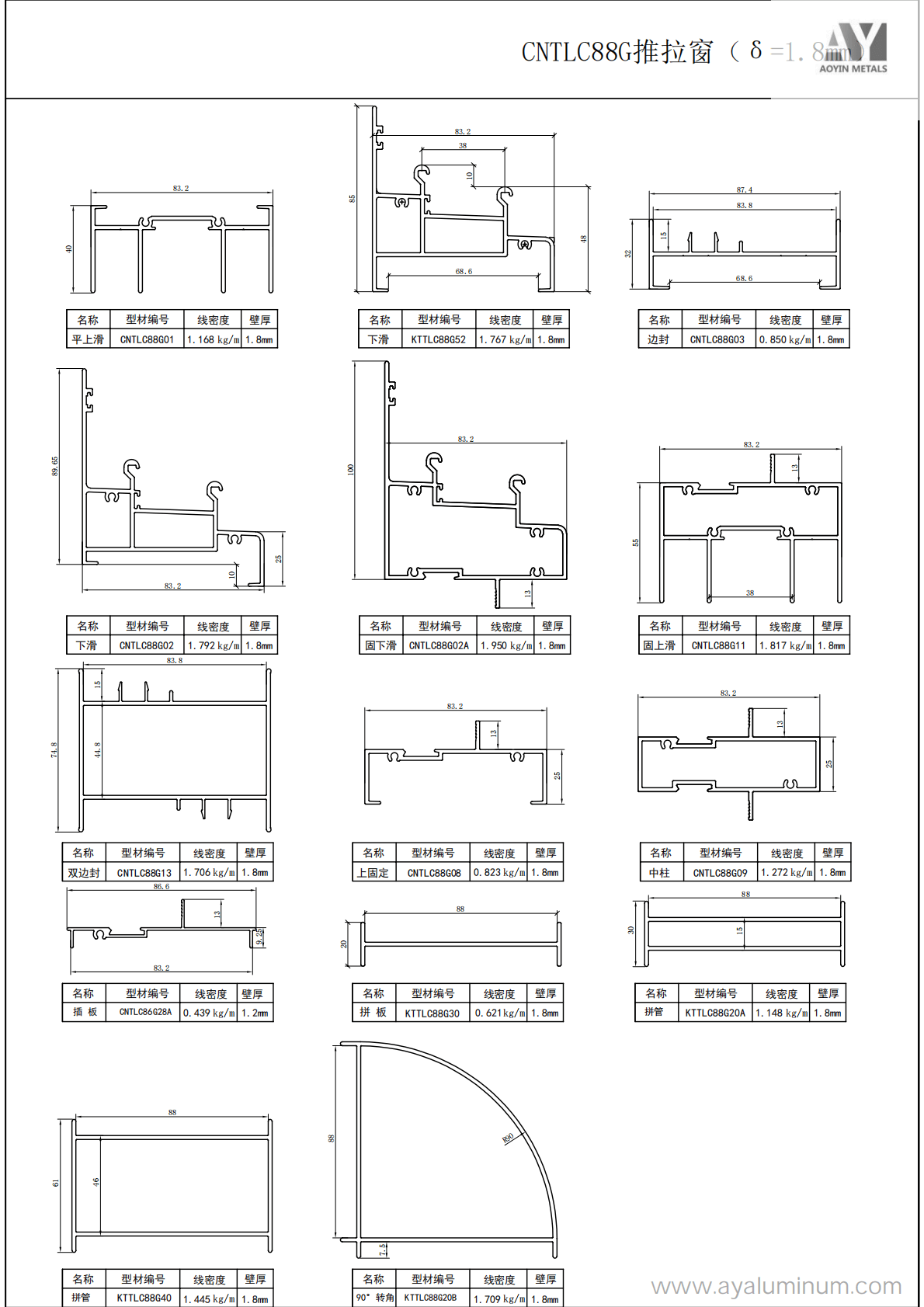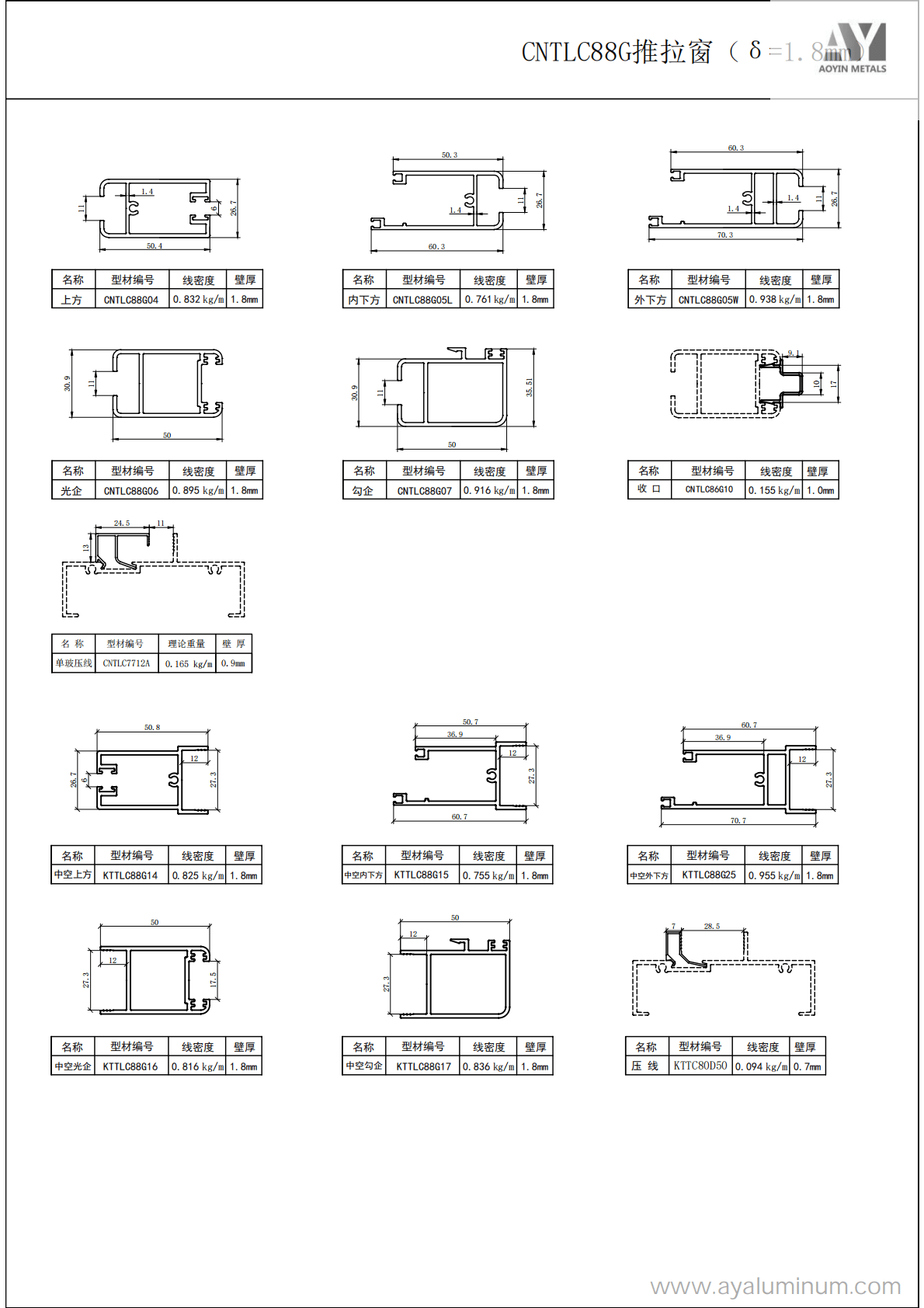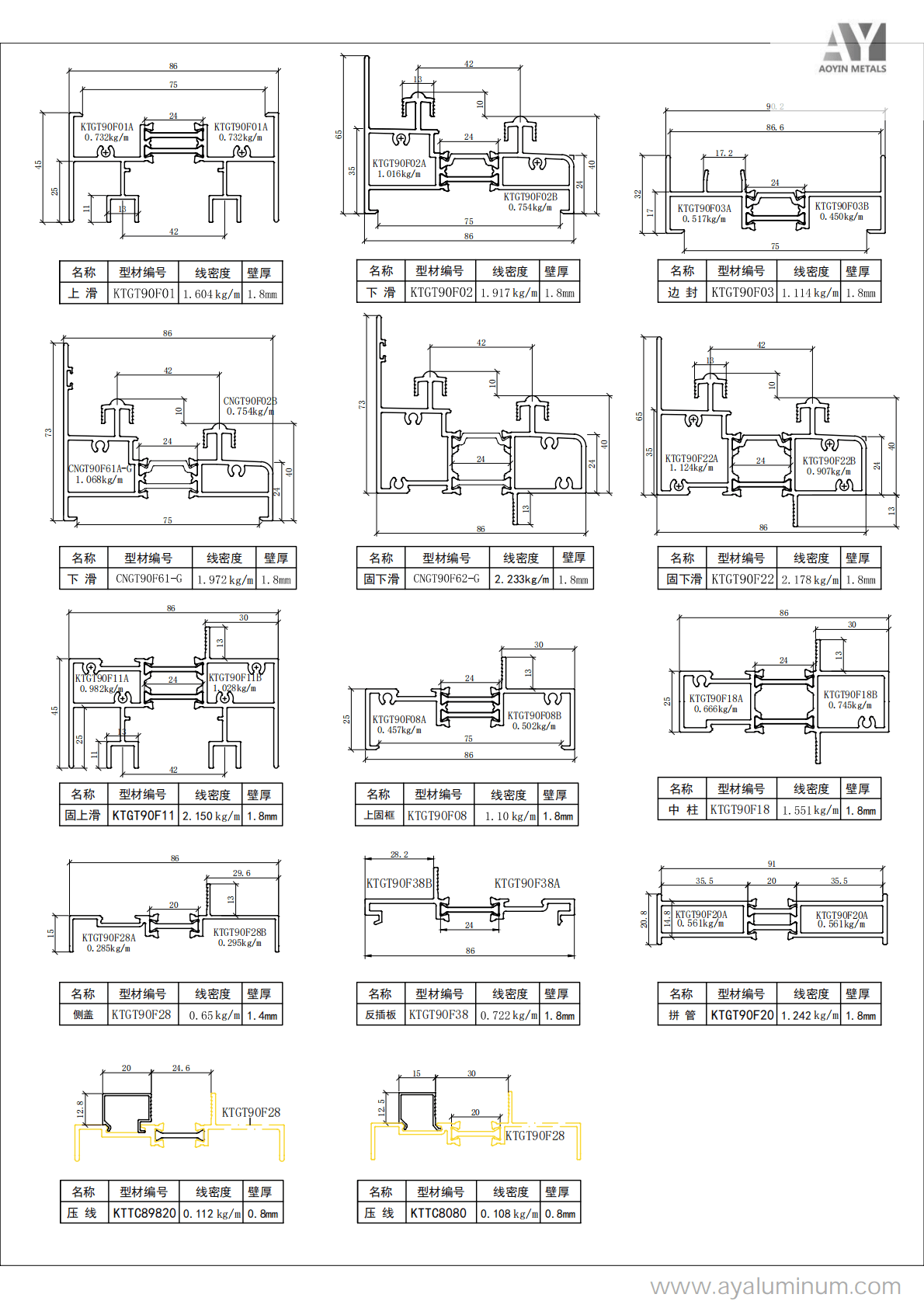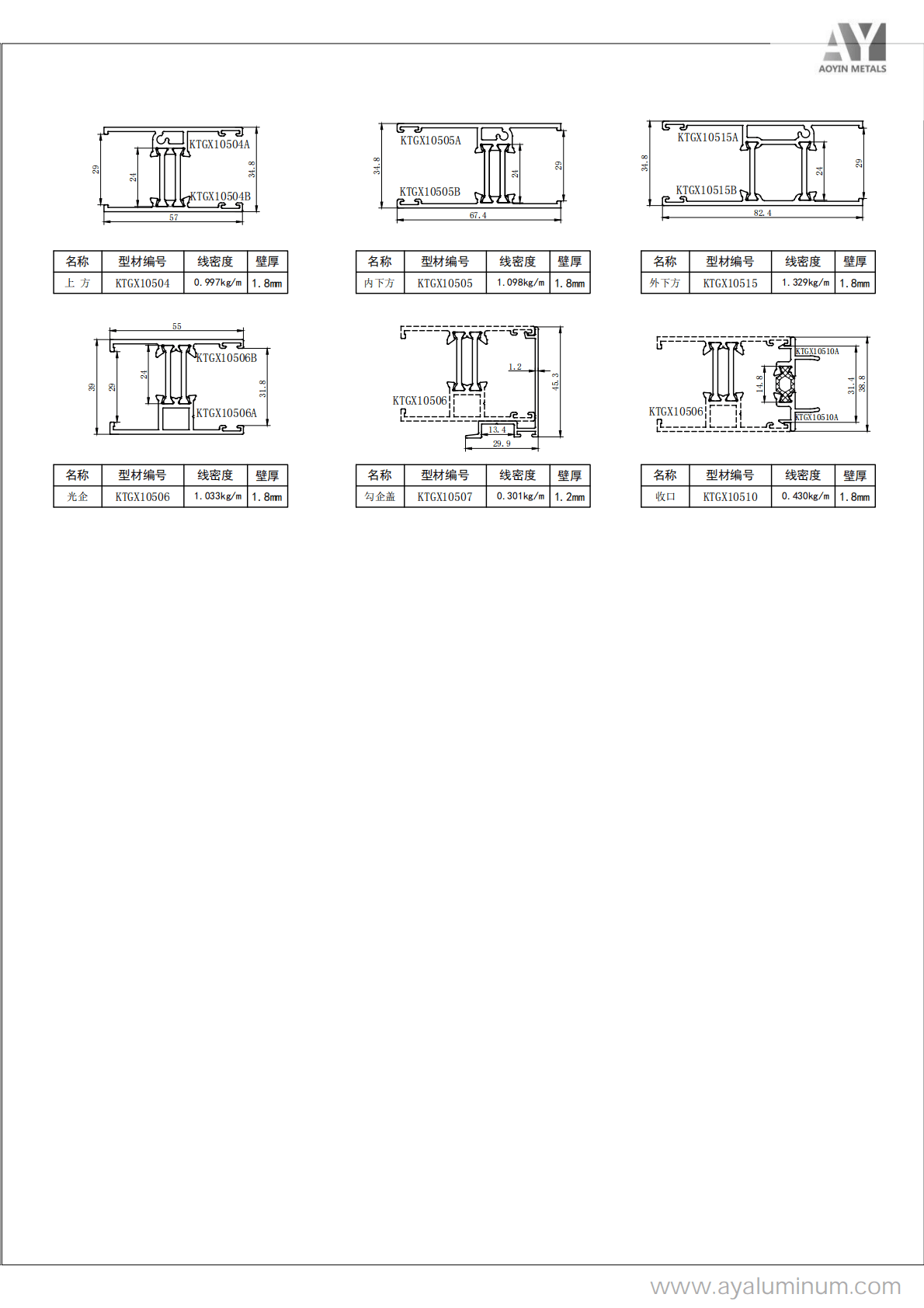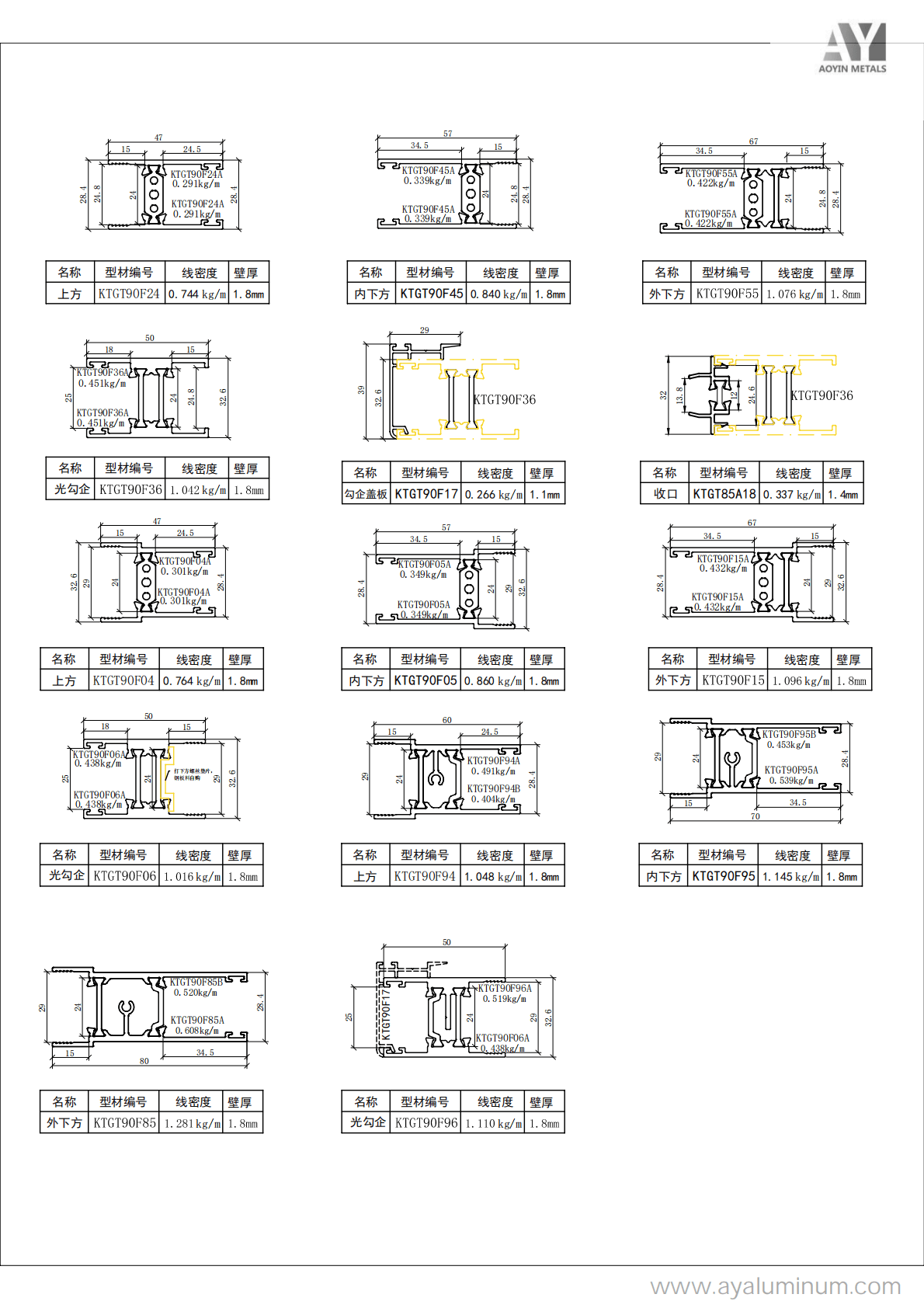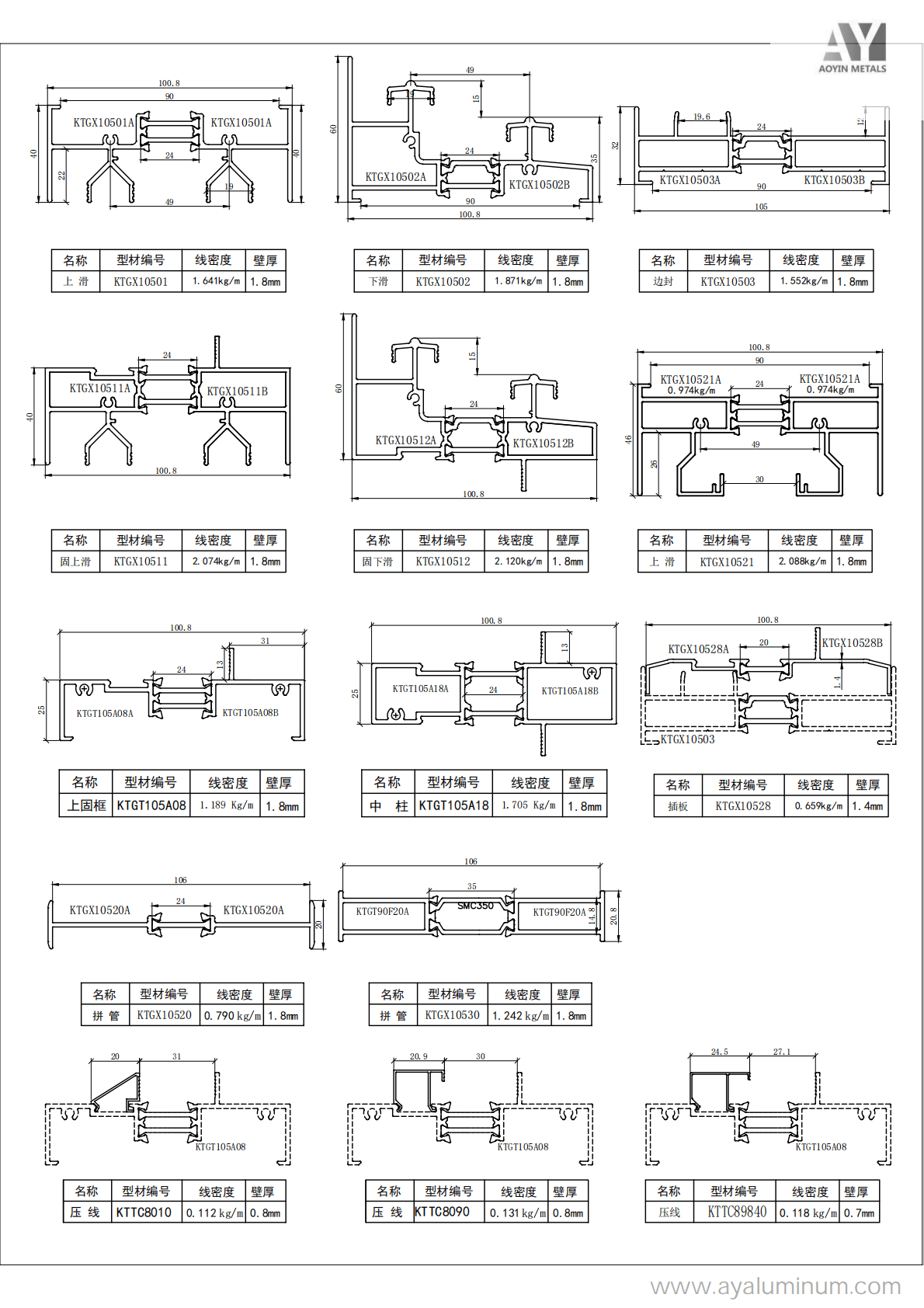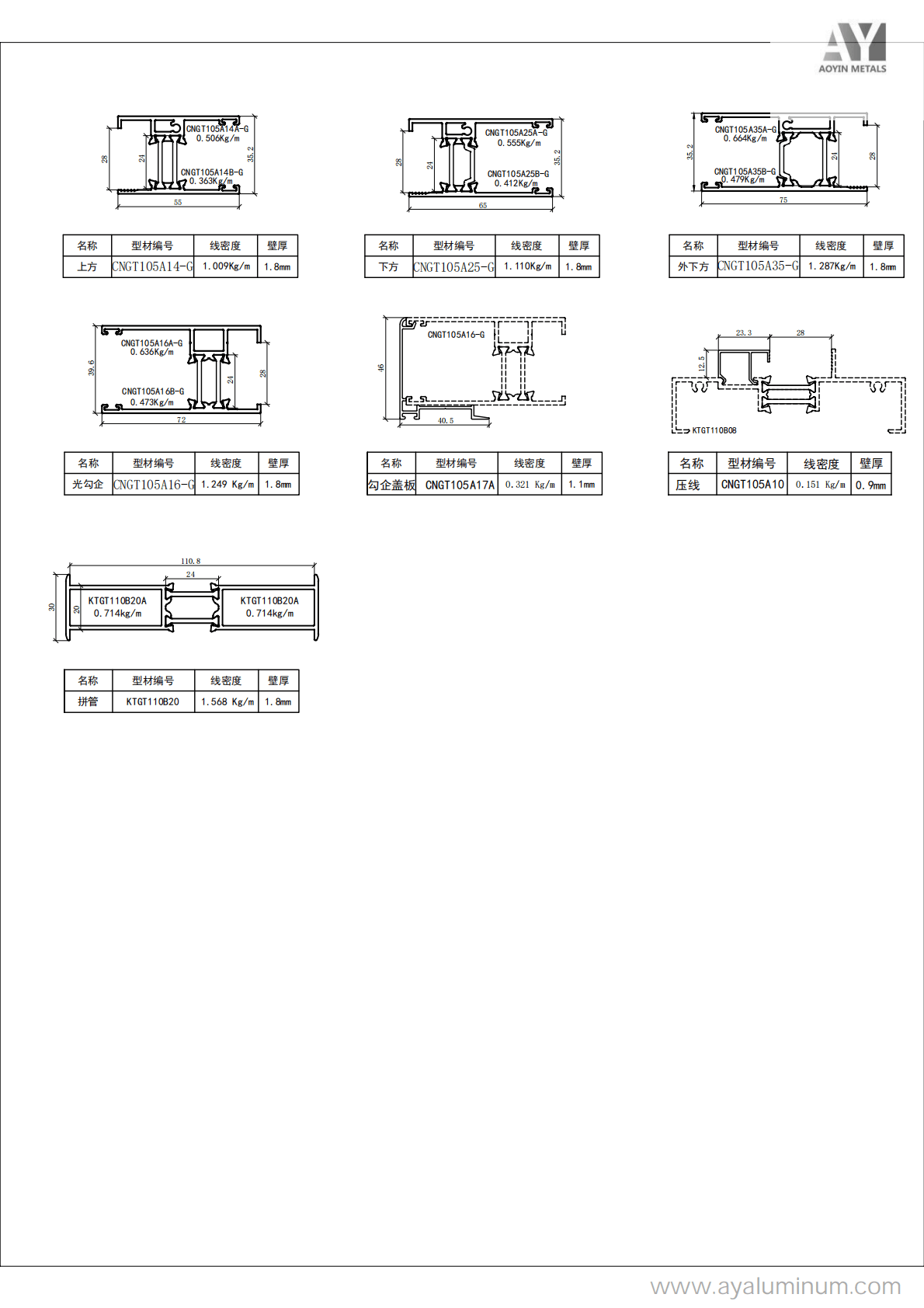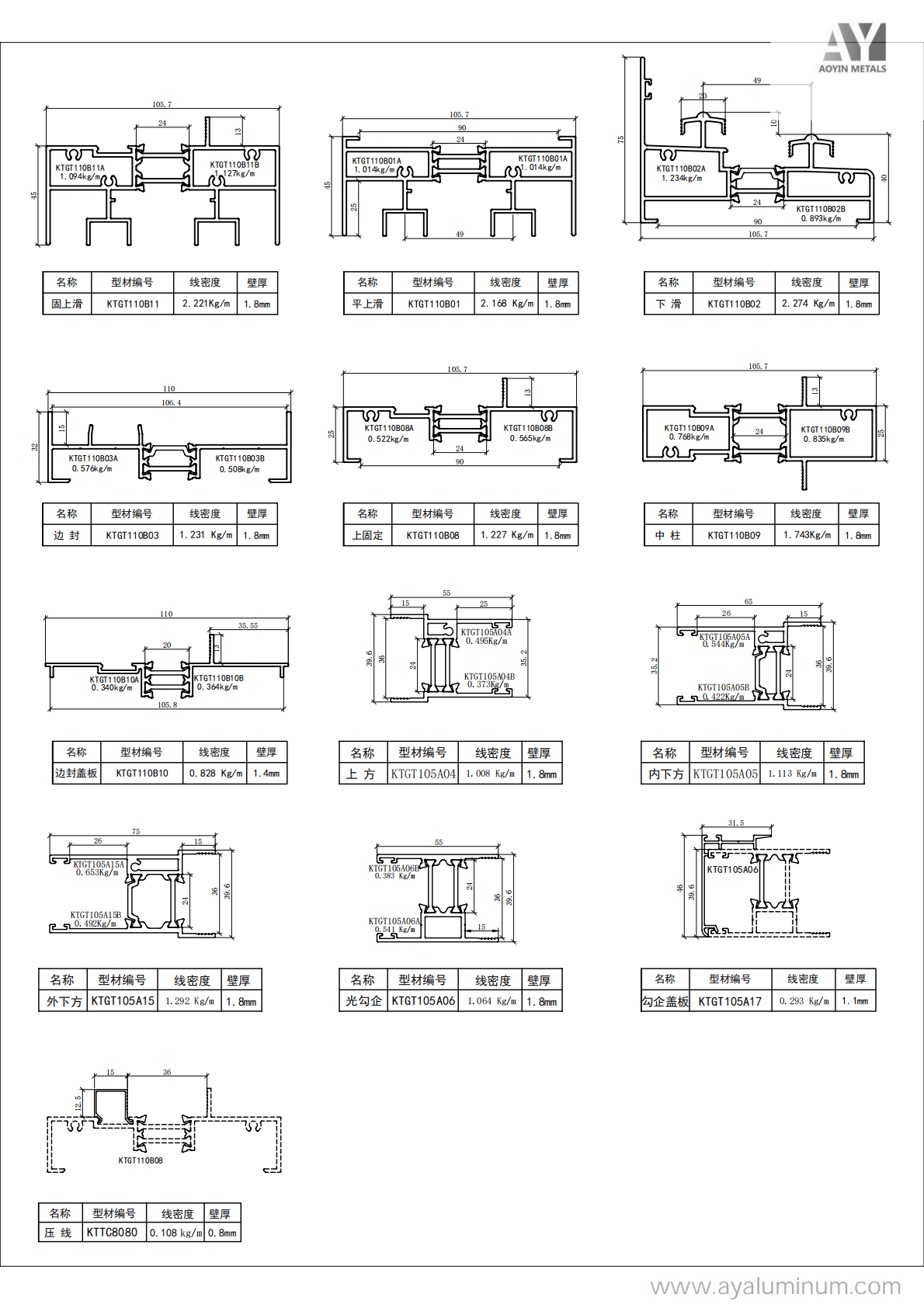Classification of design drawings for sliding window aluminum profiles from aoyin metals
1. Classification by profile characteristics
Drawings of thermal - break sliding window aluminum profiles: These drawings show aluminum profiles with two surfaces (inner and outer), connected by a thermal break strip in the middle. The thermal break strip can effectively block heat transfer, playing a role in sound - proofing and heat - insulation. It is suitable for buildings with high requirements for heat preservation and sound insulation, such as residential buildings and office buildings. On the design drawings, key information such as the position, specifications of the thermal break strip, and the wall thickness of the profile will be clearly marked .
Drawings of non - thermal - break sliding window aluminum profiles: The aluminum profile is integrally formed, with a relatively simple structure and low cost. The drawings mainly reflect the overall shape, size of the profile, and its matching relationship with window sashes, tracks, and other accessories. They are suitable for ordinary buildings with limited budgets and low requirements for heat preservation and sound insulation.
2. Classification by opening mode
Drawings of two - rail left - right horizontal thermal - break sliding window aluminum profiles: This is a common type of sliding window, which opens and closes by moving horizontally. The drawings will detail the sliding mode of the window sash on the track, the specifications and installation position of the track, and the connection structure between window sashes to ensure that the window opens flexibly and seals well. It is often used in small rooms or offices .
Drawings of three - rail sliding window aluminum profiles: Suitable for occasions that require a screen window to prevent mosquitoes or a larger opening area. The drawings will show the design structure of the three - rail, including the connection method between the screen window track and the main window track and how the multi - rail design ensures the smoothness of the sliding. It is commonly used for sealing large balconies .
Drawings of multi - rail sliding window aluminum profiles (five - rail, six - rail, eight - rail, ten - rail): The multi - rail design makes the sliding smoother, enabling super - large sash opening and a large opening area. The drawings will focus on marking the spacing between multiple rails, the strength and stability design of the track to meet the requirements of large - space windows in large balconies for opening and ventilation .
Drawings of up - and - down horizontal sliding window aluminum profiles: It opens and closes by moving vertically, suitable for places with narrow and small openings. The drawings will mark the design of the up - and - down track, the vertical moving range of the window sash, and the connection method with the wall to ensure the normal opening and closing of the window in a limited space, such as kitchens, corridors, and bathrooms .
Drawings of folding sliding window aluminum profiles: The opening sash can be folded. The design drawings will show the structure and working principle of the folding mechanism, including the connection method at the folding point and the storage position after folding, to achieve flexible space utilization. The opening area can be almost fully opened, and it is often used in commercial display areas and partitions .
Drawings of inward - tilting and horizontal sliding window aluminum profiles: Combining the inward - tilting and horizontal sliding designs, the drawings will reflect the matching method between the inward - tilting device and the horizontal sliding track and how to ensure the stability and sealing of the window in different opening modes. It is suitable for occasions that require good ventilation but not fully opening the window, such as bedrooms and studies .
Drawings of lifting sliding window aluminum profiles: It opens and closes by lifting. The drawings will mark the structure of the lifting mechanism, the design of the lifting force, and the connection method with the window frame. It is suitable for occasions that require special opening methods, such as some commercial buildings and uniquely - shaped buildings .
Drawings of suspended sliding window aluminum profiles: Suitable for large - opening balcony sealing in scenic areas, with the track pulley hidden. The drawings will focus on showing the design and installation method of the hidden track and how to ensure the smoothness and aesthetics of the window during the opening and closing process. It has a high overall aesthetic value and is often used in the balcony design of high - end residential buildings and villas .
3. Classification by profile series
Common profile series drawings include 55 series, 60 series, 70 series, 80 series, 90 series, etc. The series number represents the millimeter number of the window frame thickness construction size. The larger the series, the wider the cross - sectional width of the profile, the better the strength and stability, but the relatively higher the price. For example, series 70 and above are usually used in occasions that require higher strength and better heat - preservation and heat - insulation performance .
